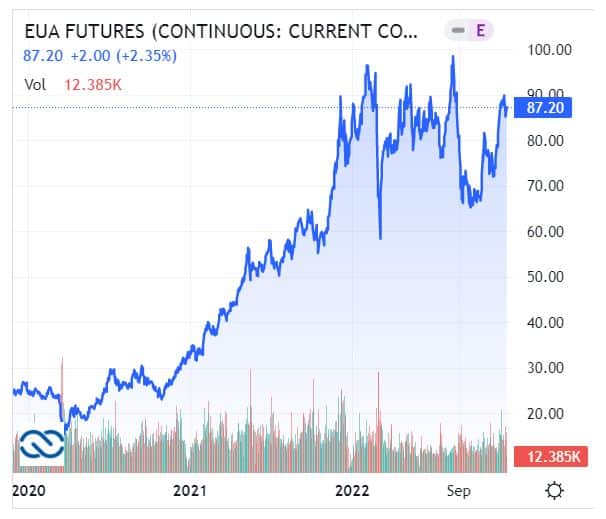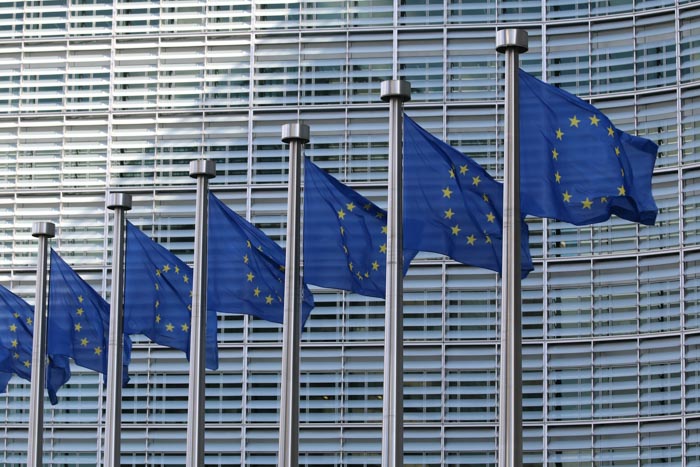The European Union (EU) striked a new deal to reform its carbon market, the centerpiece of the bloc’s Green Deal that aims to cut emissions and reach net zero by 2050.
The EU Emissions Trading System (ETS), created in 2005, is the world’s biggest carbon market. It covers around 40% of total EU emissions.
It permits industries with high energy demands like steel and cement to use the “polluter pays” approach to cover their emissions by buying ‘free allowances’ (or carbon credits).
The credits work like quotas meant to reduce emissions over time to propel those industries to emit less and invest in green technologies. The goal is for the EU to achieve its net zero targets.
Negotiators of the political deal went through heated talks for about 30 hours before agreeing to the EU carbon market reform. One negotiator remarked:
“The deal is a success for the EU and will provide certainty to companies and investors even if some compromises had to be made as the economic environment is very challenging.”
EU Carbon Market Reform: The New Changes
Last June, the European Parliament (EP) had rejected the bill to reform the ETS.
The new agreement seeks to achieve three key changes to the EU carbon market, according to the EP’s statement:
- aims to accelerate emissions cuts,
- phase out free allowances to industries, and
- targets fuel emissions from the building and road transport sectors.
Under the previous system, the EU requires around 10,000 entities to buy carbon credits when they pollute. This is critical to meeting the bloc’s target to reduce net emissions 55% by 2030 compared with 1990 levels.
- Under the new deal, that target now becomes 62% reduction from 2005 levels by this decade. Industries covered by the EU ETS must reduce their emissions by that amount.
EUA Out, CBAM In
The new plan also aims to speed up the timetable of phasing out the free allowances. 48.5% by 2030 and a complete removal by 2034.
In particular, it will remove 90 million carbon credits from the EU ETS in 2024 and 27 million in 2026. Then the rate at which the cap on EU allowances (EUA) falls is cut by 4.3% from 2024-2027 and 4.4% from 2028-2030.
The price of EUA has been soaring in recent years as seen in the chart below.

That could be due to the expectation that stricter EU emissions targets will lower the supply of carbon credits under the scheme. It reached a record high this year – 99.22 euros/tonne.
President of the EP’s environment committee, Pascal Canfin, said the carbon price for industries affected by the ETS would be around 100 euros/tonne. He posted on his social media that there’s no other continent that has “such an ambitious carbon price”.
The reduction in free EUA will be compensated by another landmark measure agreed by the bloc – the CBAM or Carbon Border Adjustment Mechanism. It’s a “carbon border tax” that will impose a pollution price on imports of certain goods to the region.
CBAM will help protect domestic producers from cheaper rivals in countries with less strict environmental standards. One of the negotiators noted that CBAM can be “a catalyst for global carbon pricing”. But it requires diplomatic skills to work.
New Market Inclusions
Lastly, the EU carbon market reform aims to include the maritime sector as well as intra-European flights. Plus, there’s a possibility to also cover waste incineration sites from 2028. But that depends on the report from the EC.
What’s for sure is to make households pay for emissions on their gas heating and road fuels from 2027. The price will be capped until 2030. Suppliers of fuel and gas need to buy carbon credits to cover their emissions.
But this change raises concerns households are already struggling with high energy prices. The MEPs argued that it should apply to offices and large vehicles only.
If energy prices remain high, this part of the plan will be postponed for a year, from 2027 to 2028. Revenues from this second EU carbon market will go to what the bloc called “Social Climate Fund”. It will be a 86.7 billion euro fund that will help households and businesses cope with the carbon costs and soaring energy prices.
As for Peter Liese, the head negotiator, this new deal will:
“…give breathing space for citizens and industry in difficult times and provide a clear signal to European industry that it pays off to invest in green technologies [until 2026].”
A conservative MEP added that after such period, it will be “the moment of truth: we must reduce our emissions by then, or pay dear”.
The deal is still provisional and needs formal adoption by the European Parliament and the European Council.

